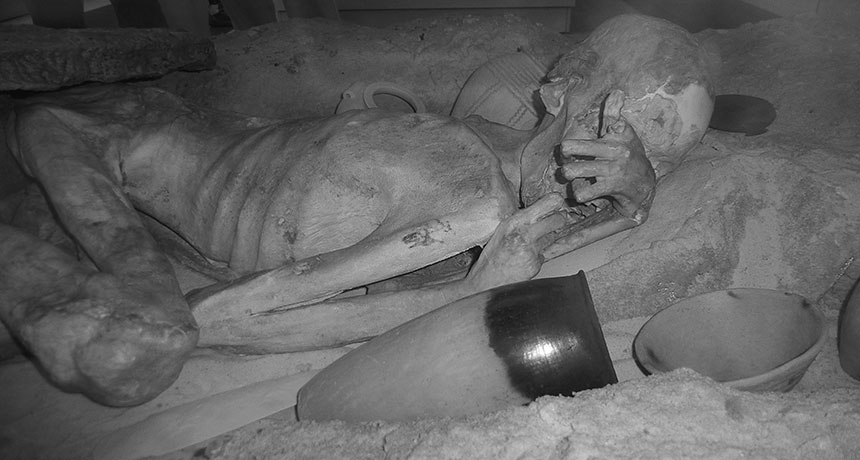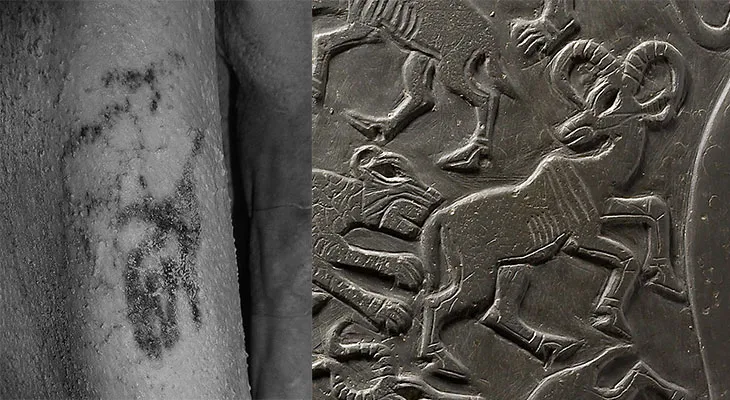Museum mummies sport world’s oldest tattoo drawings
Infrared photography reveals animals and symbolic designs from 5,000 years ago

TATT MAN Infrared imaging revealed that smudges on the upper-right arm of a naturally mummified Egyptian man are actually tattoos of a wild bull and a Barbary sheep. These oldest known picture tattoos date from at least 5,000 years ago.
© the Trustees of the British Museum








